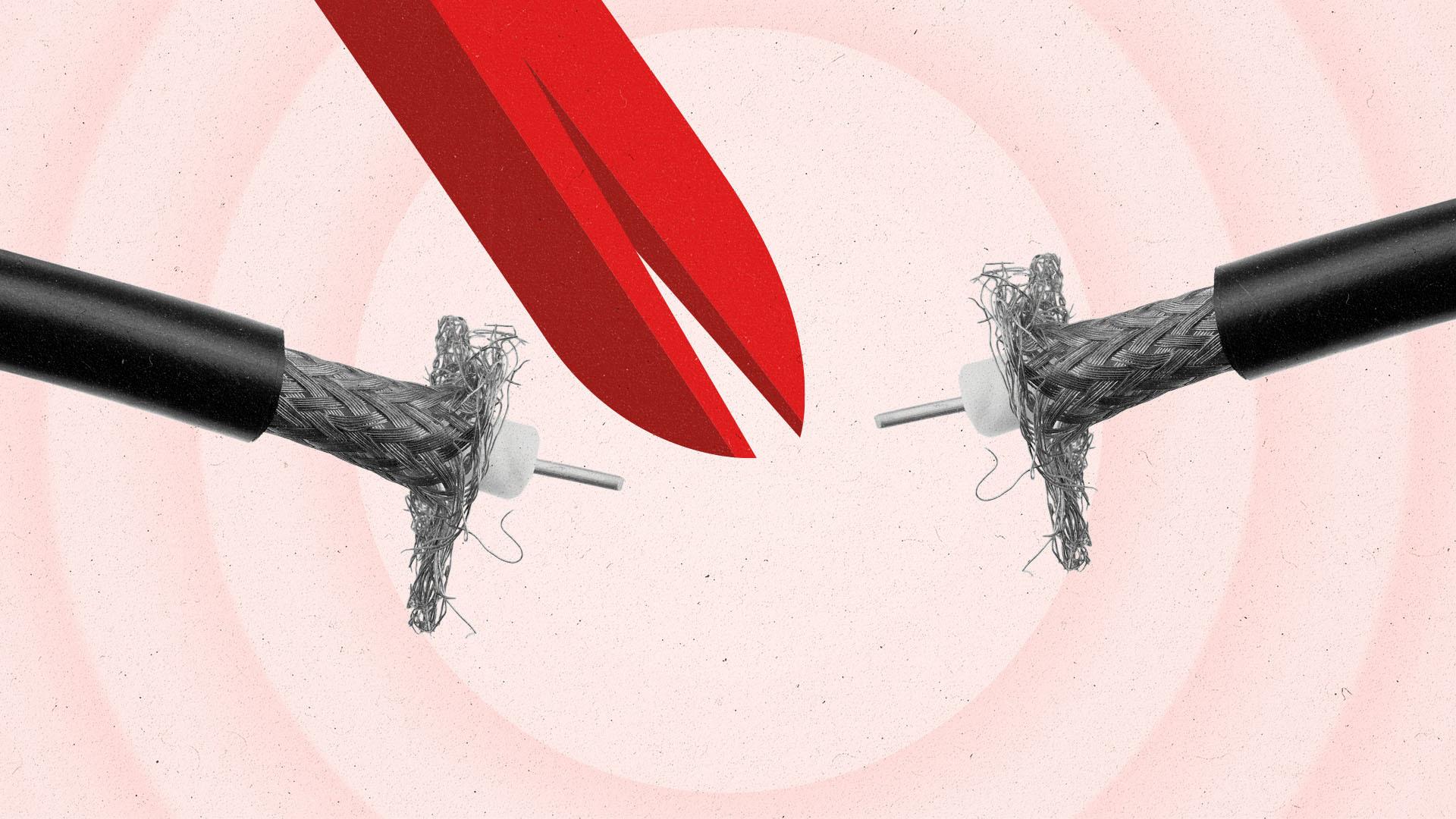Netflix can draw on lessons from cable with advertising launch

Ads are finally on Netflix. That is, if you want them.
Netflix accepting ads comes 15 years after the platform revolutionized the world with on-demand ad-free streaming content. The streaming giant’s ad-supported tier could add $1 billion in revenue next year, and $3.5 billion by 2027, according to a recent projection from MoffettNathanson. Even as Netflix and other streaming platforms have gained viewership at the expense of cable TV, they have also drawn lessons from the way cable TV initially adopted ads back in the day.
“Advertising is the primary economic engine of entertainment, and certainly home entertainment,” Patrick Parsons — the author of Blue Skies: A History of Cable Television — tells The Current. “It’s always been the economic base of any kind of television.
Cable TV’s modern beginnings
After HBO kicked off the modern cable TV wave by launching an ad-free premium channel in 1972, Bravo, Nickelodeon, TLC, and Disney all followed suit. Not every channel launched without ads though, with CNN, TBS, ESPN, MTV, and USA airing ads from the start. This environment led The New York Times to publish a 1981 story entitled “Will cable TV be invaded by commercials?” that opened as follows:
“There has been a widespread impression — among the public, at least — that cable would be supported largely by viewers’ monthly subscription fees. These days, however, as cables are laid across the country and new programs constantly pop up to fill the gaping maw, cable experts are talking as glibly about the potential advertising revenues as they are about opportunities for programming.”
Cable was indeed invaded by commercials because the money was too strong to pass up. Cable ad revenues skyrocketed from $45 million in 1980 to $1.4 billion in 1990, according to a 1991 paper by Jonathan D. Levy, published in the Maine Policy Review. During that same period, the number of households with basic cable jumped from 19.2 million to 53.1 million, 58 percent of television households at the time. After peaking in 2000 with 68.5 million cable subscribers, the number has dwindled to 46.2 million this year.
Cable’s reflection
This history suggests it may have been unavoidable that Netflix repeated some of the concepts from the television industry it shook up, echoing the Mark Twain quote “History never repeats itself, but it does often rhyme.”
The streaming giant also revolutionized a few concepts of its own, like introducing flexibility and choice in entertainment. Media-history expert Amanda Lotz — author of We Now Disrupt This Broadcast: How Cable Transformed Television and the Internet Revolutionized It All — highlights a key aspect of this conversation between cable and streaming: Unlike on cable, consumers can choose to stay ad-free if they want.
“It's important to not lose sight of just how much more choice we have relative to the past,” Lotz tells The Current. “One of the things that’s just really different about the economic environment now is there are all kinds of choice. When you had a cable situation, that was a lifelong relationship. You didn’t really get rid of cable unless you really couldn’t pay for it or you were moving. And that was crucial to its business, whereas it's very easy to come in and out of the streaming services.”
Even when people do choose the ad-supported version on streaming services, the ad load is far less than on cable. Netflix is starting its ad-supported tier with 4 to 5 minutes of ads per hour, which is a similar ad experience to other major ad-supported video on demand (AVOD) platforms like Peacock, HBO Max, and Discovery+. This shorter block represents a massive improvement to linear TV’s average commercial time of 13 minutes per hour, according to analysis from MoffettNathanson.
Early cable programming was heavily driven by rebroadcasting broadcast shows and movies, reminiscent of how Netflix and others started their content strategy before launching original content. Cable programmers also innovated by “narrowcasting,” or targeting specific audiences with niche content and networks like HGTV and The Food Network. Decades later, Netflix created its own version of narrowcasting with microgenres to create fandoms by building over 76,000 microgenres.
Netflix’s next phase
Starting today, advertisers will be able to target viewers on Netflix by country, content genre, and within the top 10 most popular shows.
With Netflix releasing the new service six months after it was announced, the streaming giant has maintained that it’s taking a “crawl, walk, run” approach to addressability. Netflix’s president of worldwide advertising, Jeremi Gorman, is taking a big-picture approach to the streaming giant’s next chapter.
“What we do at launch will not be representative of the long-term opportunity of what the product will be,” Gorman recently said in a press briefing. “These incredible teams have gotten this out the door in six months. We want to bring the members and advertisers the best experience at launch. Our road map is TBD, and we will continue to lead in the space.”
Subscribe to The Current
Subscribe to The Current